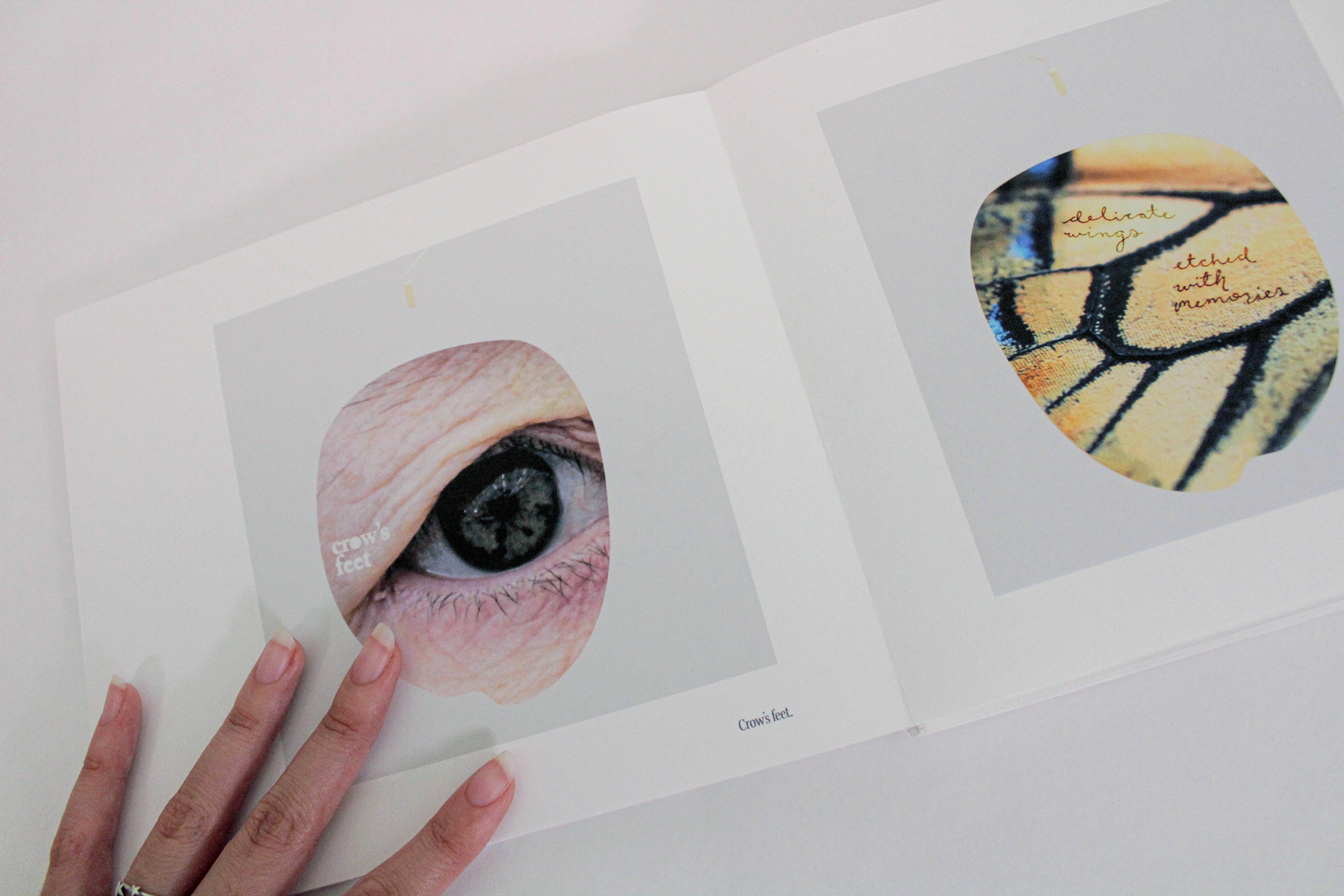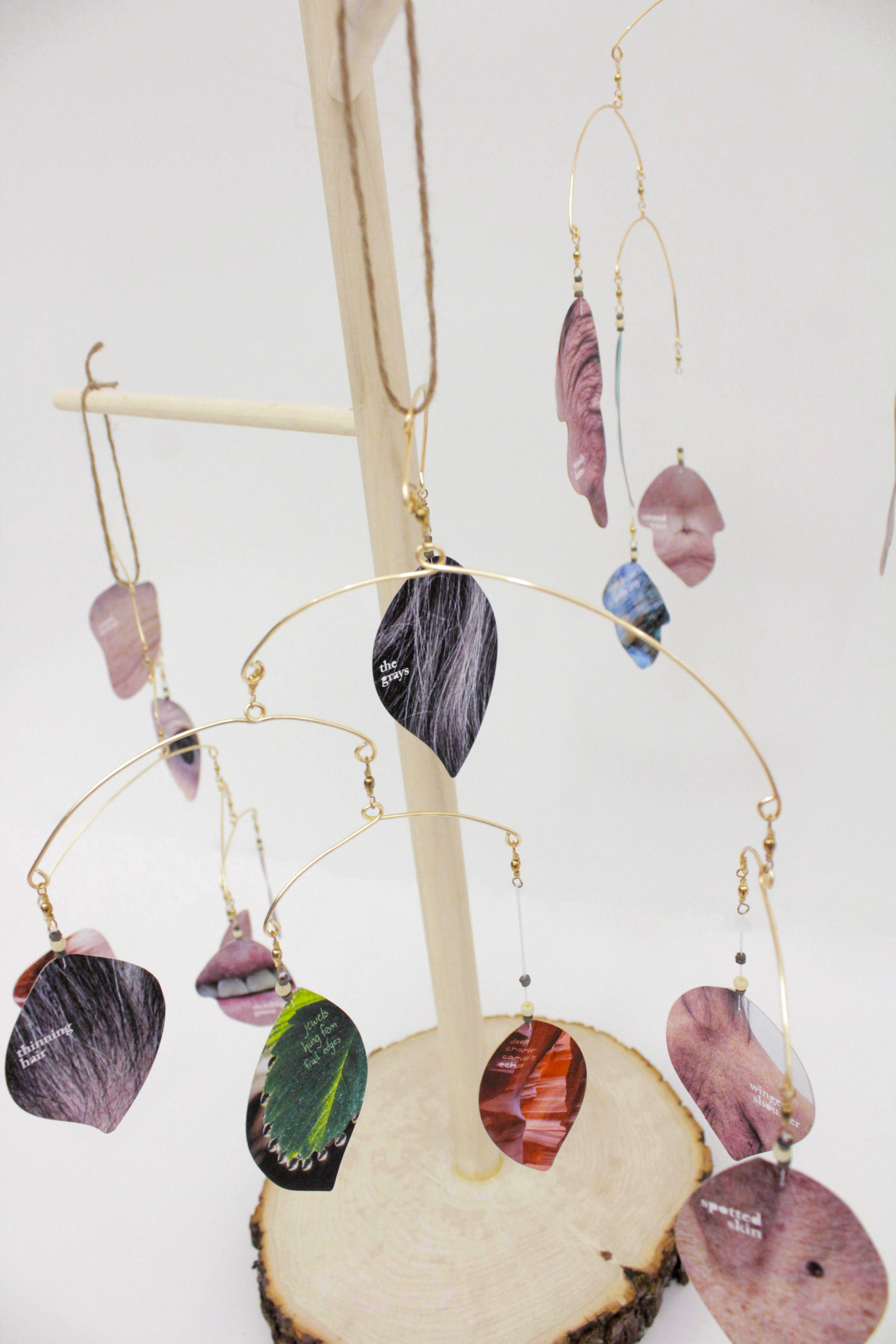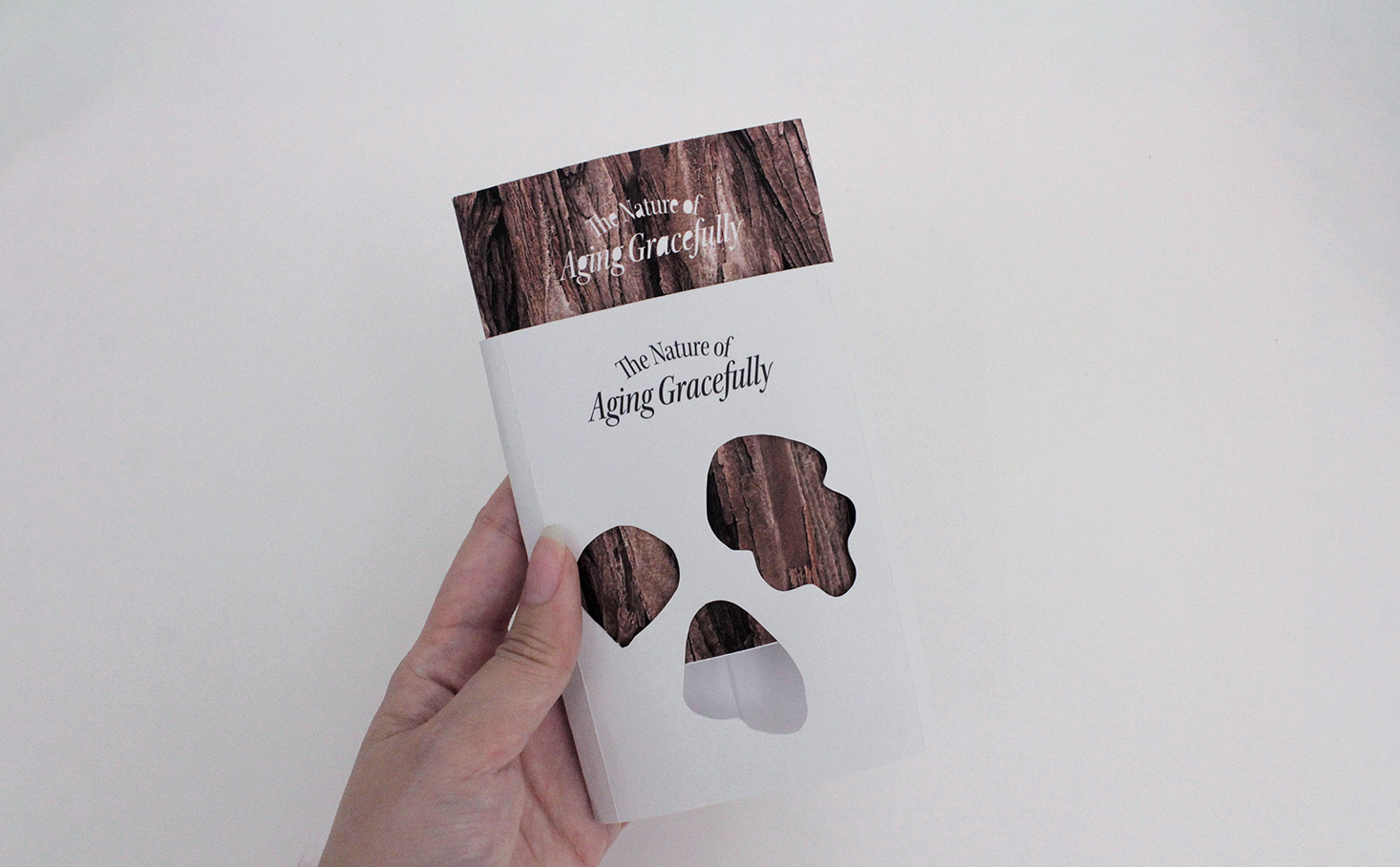Three kinetic wire sculptures that gently spin to reveal visual similarities between signs of aging on women and scenery in nature inspired by the Japanese aesthetic of wabi-sabi.
Abstract
In American society, signs of aging are seen as a negative aspect brought about by the natural passage of time. Everywhere you look, anti-aging campaigns can be found advertising extreme skincare routines, intrusive plastic surgery, or some other unnatural method of physical suppression. Most of these ads are specifically targeted towards women, whose value is placed upon their youth and beauty by society from an early age. These ingrained superficial values then lead to women feeling ashamed and disappointed with their self image once past their perceived “prime,” leading to desperate attempts to salvage an artificial eternal youth. Born of ancient Greek aesthetic ideals, today’s Western beauty standards demand an impossible standard of perfection, prioritizing flawless skin, proper symmetry, and most importantly, youthful vigor. Placing such unreasonable expectations against the perpetual effects of time makes western views of aging degrading and bleak.
In direct contrast, the ancient Japanese design aesthetic of wabi-sabi states that signs of an object’s aging are exactly what make it beautiful, especially when found in nature. It finds great aesthetic appeal in imperfections, as they reveal the hidden history and character within the artifact. Furthermore, it depicts naturally aged patina as a desirable aspect instead of an eyesore. Overall, it promotes the idea of earthly objects as imperfect and impermanent, and that their inherent value is not diminished by those factors, but rather enhanced.
By applying this rhetoric that embraces and accepts rather than shames and denies, views of aging in the West could be reinterpreted into an appreciated privilege of life. “Wrinkles are merely a reminder of the laughs that caused them.”
In direct contrast, the ancient Japanese design aesthetic of wabi-sabi states that signs of an object’s aging are exactly what make it beautiful, especially when found in nature. It finds great aesthetic appeal in imperfections, as they reveal the hidden history and character within the artifact. Furthermore, it depicts naturally aged patina as a desirable aspect instead of an eyesore. Overall, it promotes the idea of earthly objects as imperfect and impermanent, and that their inherent value is not diminished by those factors, but rather enhanced.
By applying this rhetoric that embraces and accepts rather than shames and denies, views of aging in the West could be reinterpreted into an appreciated privilege of life. “Wrinkles are merely a reminder of the laughs that caused them.”
Thesis Statement
Instead of an exhausting chase for perfection defined by impossible societal standards, people must embrace their natural marks of aging, and appreciate them as signs of a life fully lived by identifying with nature.



Research Questions
-
How can the concept of wabi-sabi be introduced to new learners in a visual manner?
-
What is the best way to visually present connected similarities and metaphors between aged nature and aged people?
-
Rather than demanding people to love themselves, what is the best manner to gently remind them of their inherent beauty?
Outcome
The installation will act as a gentle nudge to our current aging population, especially women, into a more appreciative mindset of their physical appearance. Aging is seen in all organic beings, so why try and fight what has been built into our code since the beginning of life? These imperfections should instead be embraced as physical signifiers of one's character, history, and vitality, the same way aging is often appreciated when seen in nature. After viewing the installation, visitors will be able to connect physical signs of aging to timeless beauty in nature, rather than immediate feelings of repulsion or shame.
Advisors
Connie Hwang–Primary Advisor
SJSU Professor, Graphic Designer
SJSU Professor, Graphic Designer
Julio Martinez–Secondary Advisor
SJSU Professor, Graphic Designer
SJSU Professor, Graphic Designer
Kaeko Chiba–Tertiary Advisor
Akita International University, Japanese Traditional Arts
Akita International University, Japanese Traditional Arts
Process Book






